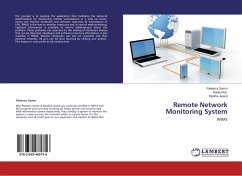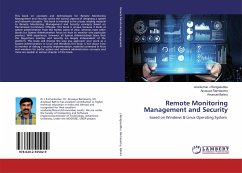
Remote service discovery and control
for ubiquitous service environments in next-generation networks
Versandkostenfrei!
Versandfertig in 6-10 Tagen
39,99 €
inkl. MwSt.

PAYBACK Punkte
20 °P sammeln!
Ubiquitous computing, which is the distribution of computing systems in environments that appear seamless to users, is increasingly becoming part of people's life. For example consumer electronics with Digital Living Network Alliance (DLNA) support, such as TVs and mobile phones, now allow users to easily discover and control each other. This allows users to instantly show photos from their mobile phone on a TV. A fundamental enabler for many such ubiquitous computing scenarios is service discovery. This book presents use cases, architecture and prototypes for remote service discovery and cont...
Ubiquitous computing, which is the distribution of computing systems in environments that appear seamless to users, is increasingly becoming part of people's life. For example consumer electronics with Digital Living Network Alliance (DLNA) support, such as TVs and mobile phones, now allow users to easily discover and control each other. This allows users to instantly show photos from their mobile phone on a TV. A fundamental enabler for many such ubiquitous computing scenarios is service discovery. This book presents use cases, architecture and prototypes for remote service discovery and control. The solution is based on the SIP Presence framework. It is also designed to work with the IP Multimedia Subsystem (IMS), which is emerging as the service control function for core networks. Use cases covered include remote multimedia access, remote facility management and service delivery to ad-hoc environments.












